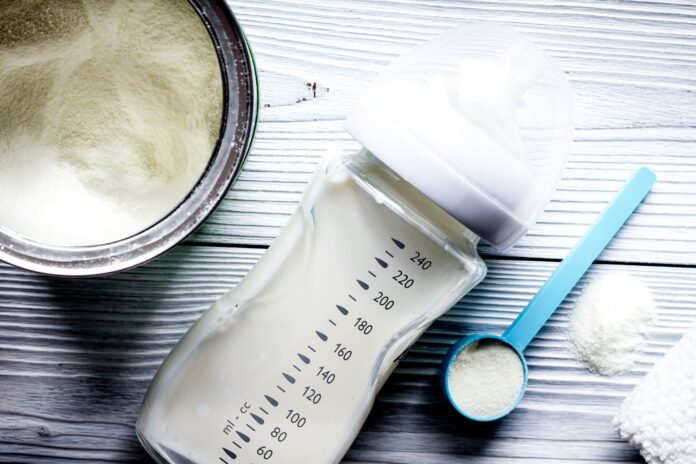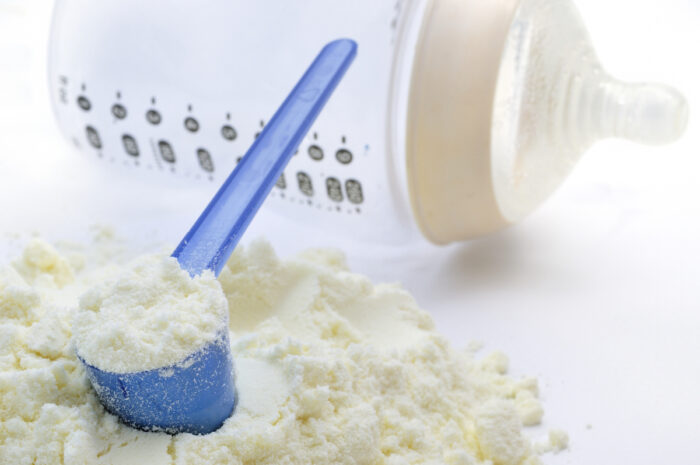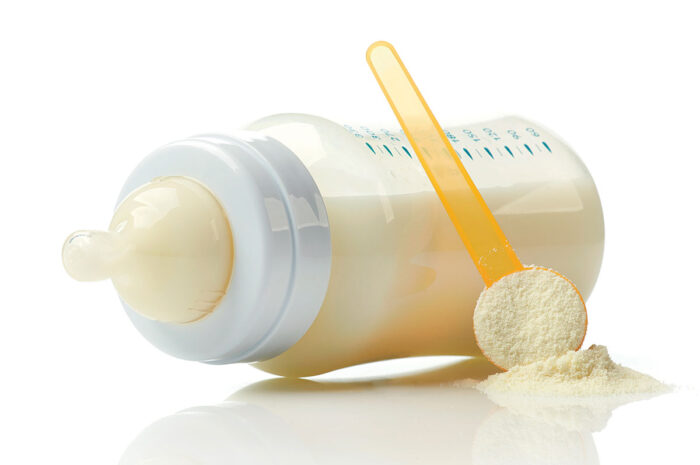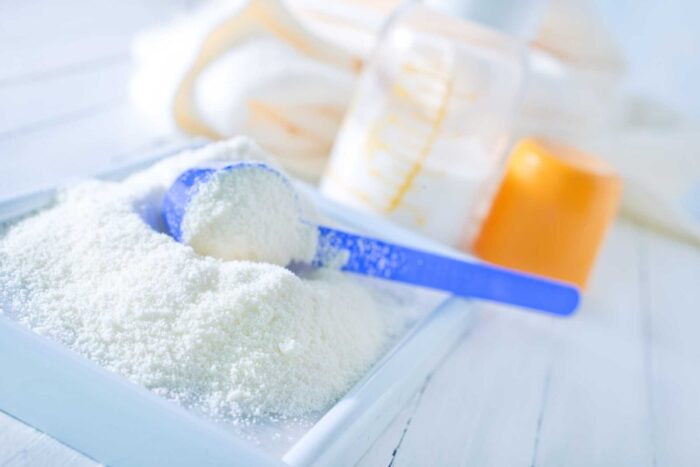
Baby nutrition has always been at the forefront of many parents’ concerns. Given the pivotal role nutrition plays in an infant’s development, understanding the intricacies of baby formula becomes paramount.
These specially designed mixtures often serve as a primary or supplemental source of nutrition for many infants across the globe. Yet, the lengthy ingredient lists on formula cans can be daunting, leaving parents perplexed.
This comprehensive guide aims to demystify the ingredients commonly found in baby formula, equipping parents with the knowledge they need to make well-informed decisions for their little ones in 2024.
Types of Baby Formulas

Diversity is the keyword when discussing baby formulas. Each baby is unique, and the market has responded to their varying needs with a wide range of formula types. The primary categories are:
Cow’s milk-based formulas: These are the most prevalent. The protein structure of cow’s milk is adjusted to resemble that of human breast milk, providing a balanced nutritional profile suitable for most infants.
Soy-based formulas: Derived from soybeans, these formulas cater to babies who might be lactose intolerant or those whose families have specific dietary requirements, such as veganism. The protein structure differs from cow’s milk, but it’s engineered to be just as nourishing.
Hypoallergenic formulas: A saving grace for infants with allergies, these formulas undergo rigorous processing where proteins are broken down into simpler forms. This process eliminates potential allergens, ensuring these babies get their nutrition without any adverse reactions.
Different formula types will, of course, contain varied ingredient compositions. It’s essential to understand these differences as they play a crucial role in fulfilling an infant’s unique nutritional or health needs.
Basic Ingredients in Baby Formula

Beyond the type of formula lies the core foundation of their composition: carbohydrates, fats, and proteins. Like the cornerstones of adult nutrition, these three elements are pivotal for infants.
They not only fuel the rapid growth babies experience but also lay the foundation for healthy development. Each nutrient plays a specific role, echoing the nourishment babies would get from breast milk.
Carbohydrates in Baby Formula
Carbohydrates are the fuel that keeps babies active and thriving. A baby formula derives its carbohydrates primarily from lactose, replicating the natural sugars found in cow’s milk and breast milk.
However, in certain scenarios, especially for infants who cannot process lactose efficiently, alternative sources such as corn syrup solids are used. These carbohydrates, regardless of the source, are optimized to provide the essential energy necessary for the numerous developmental milestones babies achieve in their early years.
Proteins in Baby Formula

Milk, whether from cows or humans, contains two primary proteins: whey and casein. Baby formulas usually tweak the balance between these proteins to simulate breast milk’s composition.
Whey is often increased because it’s easier for infants to digest. Protein is foundational for building muscles, forming new cells, and facilitating countless biochemical reactions in a baby’s body.
Fats in Baby Formula
Fats, while sometimes misunderstood in adult nutrition, are the unsung heroes in infant nutrition. They don’t just supply calories; they provide the vital essential fatty acids that play a pivotal role in brain development, cellular function, and energy production.
To mimic the richness of breast milk, formulas often derive their fats from a carefully selected mix of vegetable oils like palm, soy, coconut, and sunflower. This ensures a balance of saturated, monounsaturated, and polyunsaturated fats.
Many modern formulas also champion the inclusion of DHA (Docosahexaenoic Acid), a type of omega-3 fatty acid, underlining its critical role in neural connectivity and visual development.
Vitamins and Minerals

Nature has designed breast milk to be nutritionally comprehensive, but when babies rely on formula, it’s crucial that they don’t miss out on any essential nutrients. Vitamins and minerals bridge these potential nutritional gaps in baby formulas.
With diligent research and development, manufacturers fortify formulas with a carefully calibrated mix of vitamins like A for vision, C for immunity, and D for calcium absorption. Minerals like iron, vital for oxygen transport, and calcium, the building block for bones, are added in precise amounts.
Together, these micronutrients play a symphony, supporting bone development, immune function, and overall robust growth, ensuring every sip babies take contributes to a well-rounded diet.
Additives and Fortifiers
With advancements in nutritional science, the realm of baby formula has evolved to encompass ingredients that do more than just feed – they boost overall health. Probiotics, those friendly bacteria that reside in our guts, are often added to formulas to aid digestion and establish a healthy intestinal flora from early on.
Prebiotics, which act as food for these good bacteria, complement this by promoting a thriving gut environment. Though they’re recent additions to the formula world, these components, while not essential, can be game-changers. They offer added benefits, notably for babies with sensitive digestive systems, ensuring they absorb nutrients efficiently.
Specialized Formula Ingredients

Every baby is unique, and for those with distinct health considerations, generic formulas just won’t cut it. That’s where specialized formulas come into play. For instance, hypoallergenic formulas delve into the very basics of nutrition.
They might contain amino acids, the building blocks of proteins, in lieu of complex proteins, practically eliminating the risk of allergic reactions. There are also formulas tailored for premature babies, offering denser nutrition.
These specialized ingredients, formulated after extensive research, ensure every baby, irrespective of their health challenges or premature birth, receives the nourishing start they rightly deserve.
Regulations and Safety
Parents’ paramount concern is their child’s safety. Recognizing this, regulatory bodies like the FDA have set rigorous standards that baby formula manufacturers must meet. These guidelines ensure the quality, safety, and nutritional adequacy of baby formulas, giving parents peace of mind.
Choosing the Right Formula
With the plethora of choices, selecting the right baby formula can be overwhelming. Parents need to weigh their baby’s unique needs, potential allergies, and any familial dietary restrictions. It’s always prudent to collaborate with a pediatrician or a nutritionist, leveraging their expertise to make an informed choice.
Conclusion
The world of baby formula, with its myriad ingredients and types, can be intricate. However, with knowledge comes empowerment. As we navigate the evolving landscape of infant nutrition in 2024, arming ourselves with information ensures we provide our babies with the best start in life.
















